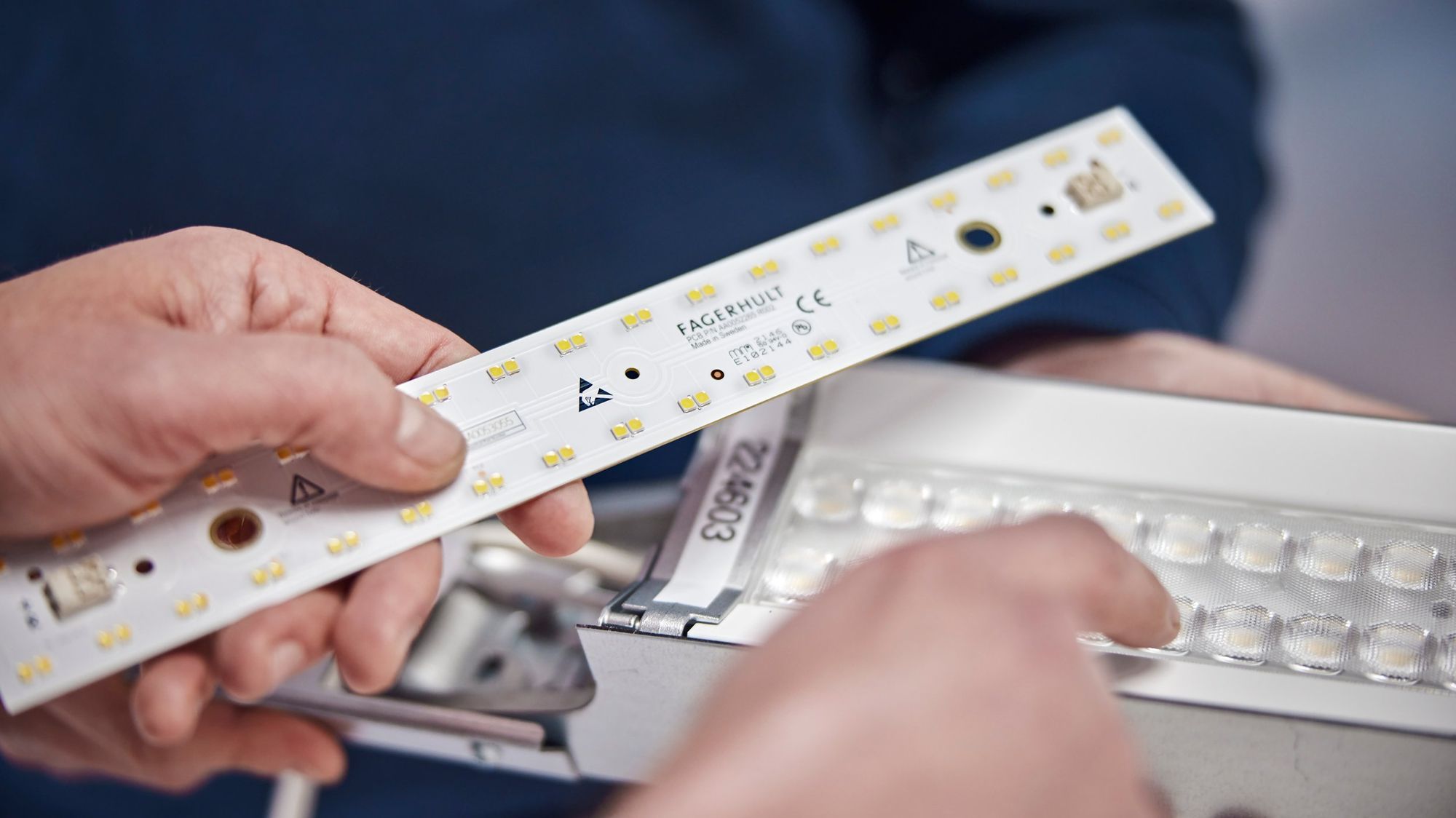Now you can see hormone impact at luminaire level
A factor that makes it easy to plan and document the lighting installation's biological effect.

Why we present Melanopic Ratio
Good lighting that facilitates both visual tasks and supports the circadian rhythm is an essential part of people's work and living environment. It's just as obvious as the spaces you work in being comfortably warm and well-ventilated. By reporting Melanopic Ratio (Melanopic Daylight Efficacy Ratio – MDER) for all luminaires, we can contribute to a holistic and sustainable approach to the workplaces of the future.
We want to make it easy for property owners to invest in spaces where people thrive and assist lighting designers in planning truly excellent lighting installations. With a factor per luminaire, you can work with Melanopic Ratio (MDER) at the diode level for each luminaire and see how different solutions affect the relationship between photopic and melanopic light intensity and energy efficiency, to achieve Melanopic Equivalent Daylight Illuminance (MEDI). It also becomes easy to document the values, for instance, in the context of building certification.
There are no shortcuts to the perfect light
With Melanopic Ratio, it finally becomes clear that the biological effects of light need to be considered in lighting planning. However, Melanopic Ratio is not a quick fix. It is just as important as before to consider all aspects of light, including the visual and emotional aspects.
Following standards and meeting normative requirements for glare and luminance is still a must. Excessive light intensities and incorrect light angles can cause discomfort and glare. People benefit from working and being in daylight, but mimicking daylight throughout the day consumes a lot of energy. Every lighting installation must be carefully planned based on user needs, room design, and daylight availability.